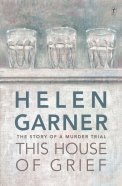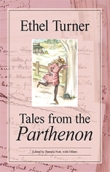 As I’ve done over the last two years, I’m devoting my last Monday Musings for the year to the Australian Women Writers Challenge. This challenge, which most of you probably know by now, was instigated by Elizabeth Lhuede in response to concerns in Australian literary circles about the lack of recognition for women writers. I am one of Elizabeth’s band of volunteers – responsible for the Literary and Classics area – and, of course, am also a challenge participant.
As I’ve done over the last two years, I’m devoting my last Monday Musings for the year to the Australian Women Writers Challenge. This challenge, which most of you probably know by now, was instigated by Elizabeth Lhuede in response to concerns in Australian literary circles about the lack of recognition for women writers. I am one of Elizabeth’s band of volunteers – responsible for the Literary and Classics area – and, of course, am also a challenge participant.
The challenge has had another successful year with continued commitment by a wide range of reviewers. In 2015, we will be moving to a self-hosted site and plan to produce a single searchable database of all reviews logged since the challenge started in 2012. This will provide an excellent entree to a wide variety of Australian women’s writing across all forms and genres that has not been easy to access to date.
As last year, the Challenge ran some special events during the year, including a focus on indigenous writers, writers from diverse backgrounds, and writers with a disability. These events have included interviews and guest posts, and I thought I’d share some with you here, because they are worth reading and because they demonstrate the depth of diversity the Challenge reaches for:
- Honey Brown (Women writers with a disability): on living with paraplegia and the surprising links between creativity and coping with adversity.
- Eleanor Jackson (Queer women writers): on how being a “bisexual, biracial female writer” affects her art.
- Ambelin Kwaymullin (Indigenous women writers): containing reviews of 5 works by Aboriginal women (including one by an Aboriginal community) which “offer insights into Aboriginal culture and existence”.
- Donna McDonald (Women writers with a disability): on the struggle for rights for people who are deaf or hard-of-hearing, and how exhausting it is.
- Yvette Walker (Queer women writers): on two queer writers – Elizabeth Bishop and EM Forster – who have inspired her.
- Jessica White (Women writers with a disability): on her deafness which brought isolation and dislocation but some consolations too!
If you are interested in the challenge, you can check it out here. I don’t believe the sign up form is ready for 2015, but keep an eye on the site. We’d love you – whether you are female or male – to join us next year. The challenge can also be found on Facebook, Twitter (@auswomenwriters), GoodReads and Google+.
As regular readers know by now, the Australian Women Writers’ Challenge is my only challenge. This year I posted 30 reviews for the challenge, three more than last year. My breadth is similar to last year, except interestingly, I reviewed no poetry this year, whereas last year I contributed three poetry reviews. What happened? However, I am pleased that I managed to read four books from my TBR pile for the challenge. Now that is something worth crowing about! Anyhow, here’s my list (with links to the reviews):
FICTION
- Jessica Anderson, One of the wattle birds
- Thea Astley, Drylands
- Brooke Davis, Lost & found (Debut novel)
- Sara Dowse, Schemetime
- Beryl Fletcher, Juno and Hannah (New Zealand author published by Australian independent publisher)
- Hannah Kent, Burial rites (Debut novel)
- Kirsten Krauth, just_a_girl (Debut novel)
- Margaret Merrilees, The first week (Debut novel)
- Roslyn Russell, Maria returns: Barbados to Mansfield Park (Debut novel)
- Angela Savage, The dying beach (Crime)
- Annabel Smith, The ark (Speculative fiction, published as an interactive app, ebook and in print)
- Tara June Winch, Swallow the air (Indigenous writer)
- Evie Wyld, All the birds, singing
SHORT STORIES
- Barbara Baynton, Billy Skywonkie (Individual story)
- Barbara Baynton, Bush church (Individual story)
- Cate Kennedy (ed), Australian love stories (Anthology)
- Catherine McNamara, Pelt and other stories (Collection)
- Angela Meyer (ed), The great unknown (Anthology)
- Deborah Sheldon, 300 degrees & other stories (Collection)
NON-FICTION
- Helen Garner, The house of grief (True crime, more or less)
- Sue Milliken, Selective memory: A life in film (Memoir)
- Jill Sanguinetti, School days of a Methodist lady (Memoir)
- Olivera Simić, Surviving peace: A political memoir (Memoir)
- Margaret Rose Stringer, And then like my dreams (Memoir)
- Clare Wright, The forgotten rebels of Eureka (History, and the 2013 Stella Prize winner)
ESSAYS
- Kate Forsyth, Stories as salvation
- Kathy Marks, Channelling Mannalargenna
JUVENILIA
- Mary Grant Bruce, The early tales
- Eleanor Dark, Juvenilia
- Ethel Turner, Tales from the “Parthenon”
Again, I have enjoyed taking part in the challenge – and plan to take part again next year, both as volunteer and participant. I particularly want to thank Elizabeth and the rest of the team for making it all such a cooperative, and enjoyable experience. I look forward to 2015.










